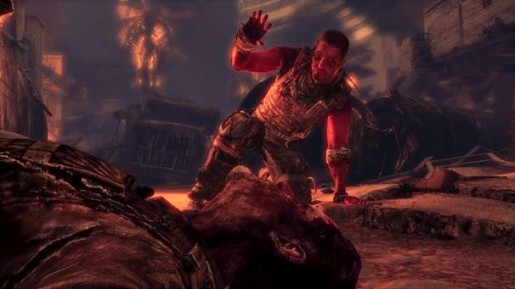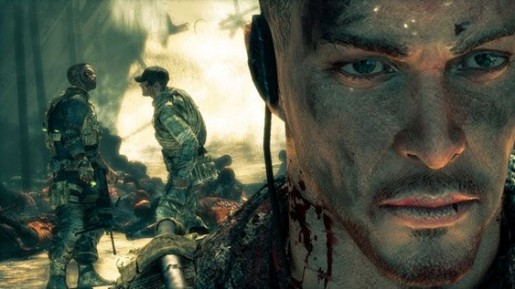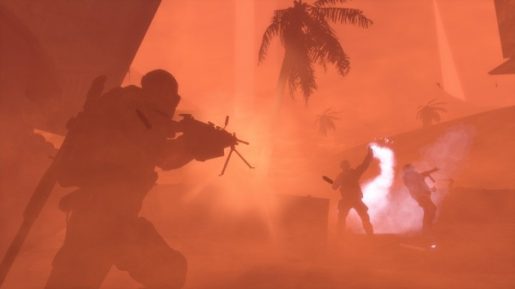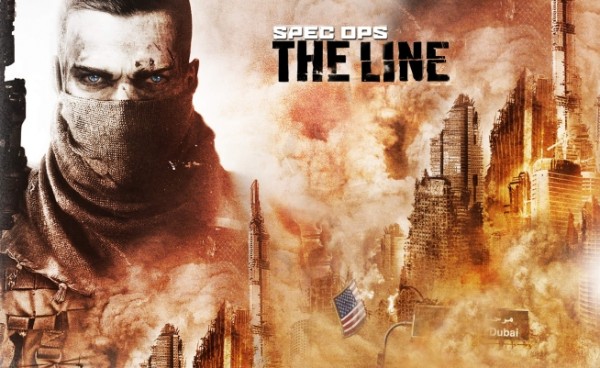
Two and a half years ago, Spike’s Video Game Awards revealed a gritty, cover-based third-person shooter. That game was Spec Ops: The Line. Since then, Yager Development’s sandy shooter has been in and out of the spotlight, but now we have finally arrived at its launch. For some, Spec Ops may be a name long forgotten, but let’s not forget that this military franchise existed back in the glory days of the PlayStation 1. Now, here were are, over a decade later and the series has returned under a new developer and direction. Can Spec Ops: The Line provide an experience fresh enough to combat current military video game fatigue with its hellish Dubai setting? Or is it simply a trip to gaming hell?
HOT
Gripping, Dark Narrative
Spec Ops: The Line tells the story of three Delta Operatives — Captain Walker, Lieutenant Adams and Sergeant Lugo — as they make their way into Dubai to look for survivors after receiving a distress call from Colonel John Konrad, the man that went missing along with the entire 33rd. Everything goes south quickly as the three soldiers realize that terrible events transpired before their arrival and that horrific actions are still being carried out. In an attempt to save the civilian population, Walker sets out on a journey to put an end to the hostiles in the area as well as locate the war hero, and his idol, John Konrad, but first they must take on the entire Damned 33rd. Making matters worse for the group, things aren’t always what they seem and the story plays out some truly harrowing scenes that will forever burn in the player’s mind.

Spec Ops: The Line isn’t afraid to go there. The story may not pick up until the halfway point, but once it does, the intensity is turned up to 11 and never goes back down until the game is over. Moral dilemmas? Check. Killing Americans? Check. Extreme displays of gore/violence? Check check check. Spec Ops: The Line has everything needed to twist your mind, make you cringe and even put your morality to the test in instances fueled by emotion (or forcing you to choose in a lose-lose situation). While these moments within themselves are memorable, it’s the overall journey that makes it feel real. Watching three, cocky Delta Operatives slowly transform into broken and beaten (shown both mentally and physically) soldiers proves to be quite powerful. One way this can be seen is through Captain Walker’s appearance and commands. As the game progresses, he will become more bloody and dirty and his mental state reflects his outer change. In the beginning, he may designate a target and say “Focus on my target!”, but toward the end his wording may change to “I want him dead!” accompanied by a angrier and more strained voice.
However, the human nature isn’t only on their side. There are points in the game where the player can listen in on random conversations being had by enemy soldiers before taking them out. For example, in one area two American soldiers chatted about gum. Soldier One asked for a piece and Soldier 2 offered up his final piece of gum, although Soldier One refused to take the last piece from his friend. Both Americans shared a brief laugh and then it was back to work… or so they would have had a hail of gunfire not fell upon them. The two lifeless bodies laid covered in blood where they once stood just casually chatting. The gunfire came from Captain Walker and his two followers. The player wasn’t given an option not to kill these men. They were in the way, armed and dangerous. It had to be done. But the lingering feeling this single scene provided stuck. These soldiers are just normal men, Americans even, just like our protagonist. The game contains several moments such as the one described and the game never lets you forget, going as far as to remind you of your actions and decisions via text in loading screens.

Sand is Your Best/Worst Friend/Enemy
One of Spec Ops: The Line’s most advertised features revolves around sand. With the game taking place in Dubai, sand is everywhere and it’s not only there as a pretty backdrop. The sand interacts with the player and enemies in several ways, making it your best friend in one moment and your worst enemy in another. On the helpful side: sand can be kicked up from thrown explosives to temporarily blind enemies, windows can be shot out to let waves of sand in to crush opposition and it can be used to create new paths. What makes it evil? Sandstorms can hit, leaving you almost completely blind and out of communication with your team (tactical commands can not be given during sandstorms). Also, large quantities of sand crashing through windows can be just as deadly to Walker as they are to his enemies. Furthermore, it can cover up less than sturdy structures, causing the player to walk on unsafe surfaces. It’s an interesting mechanic that is consistently present throughout the game, in both single player and multiplayer, and adds an extra twist to the basic workings of third-person shooters.
Addicting Multiplayer
Spec Ops: The Line contains various multiplayer game modes in addition to its single player offering. The setup is about what you’d expect from today’s online competitive multiplayer. Characters can be customized, loadouts can be created, titles and badges can be applied to help your character stand out and a rank/progression system is in full effect with classes, perks, weapons and armor (there’s tons of this stuff). Once your character is all set up, you can head into your standard Deathmatch (called Chaos) or Team Deathmatch (called Mutiny) modes, but more fun can be had in the other modes. Buried has your team aiming to take out the enemy’s Vital Points in order to reveal the HVT, which needs to be destroyed as well. Then there’s Uplink. This mode plays out like King of the Hill and pits two teams against each other for control of a central point while also keeping their team’s comm station online.

The multiplayer portion of Spec Ops was sure to adapt single player features for online competitive play. Sand is present, as expected, and can serve as a deadly tool to take out enemies. Sandstorms are also included and provide an exhilarating change of pace as everyone races for cover or risks the chance of running blindly into an opponent. A mechanic found exclusively in multiplayer is the addition of rocks as a thrown weapon. No, they aren’t used to attack people. Instead, they serve as a psychological mind game. If a rock lands near an enemy, they will see a grenade indicator icon appear. It’s up to them to decide (quickly) whether their attacker is bluffing or not. Maybe it’s a grenade, maybe it’s a rock. That’s all part of the game and it works! Watching enemies sprint wildly out of cover to get away from your tossed stone is always entertaining. For reasons such as these, the multiplayer provides a solid experience worth checking out.

